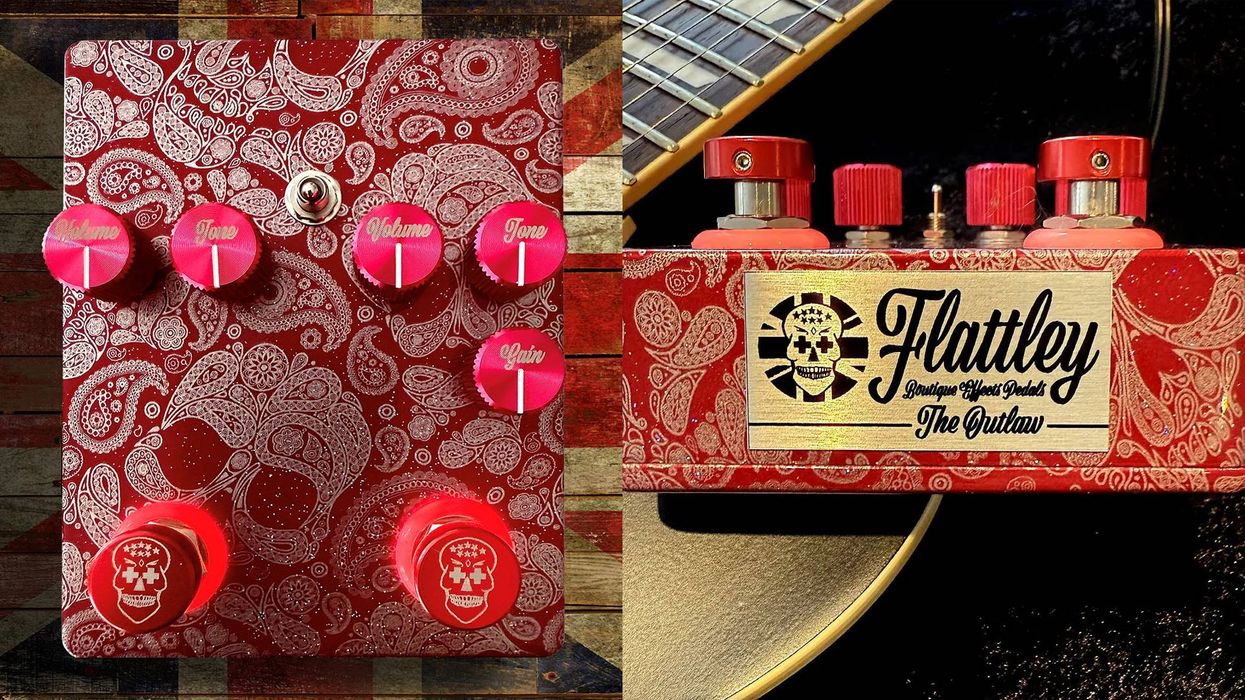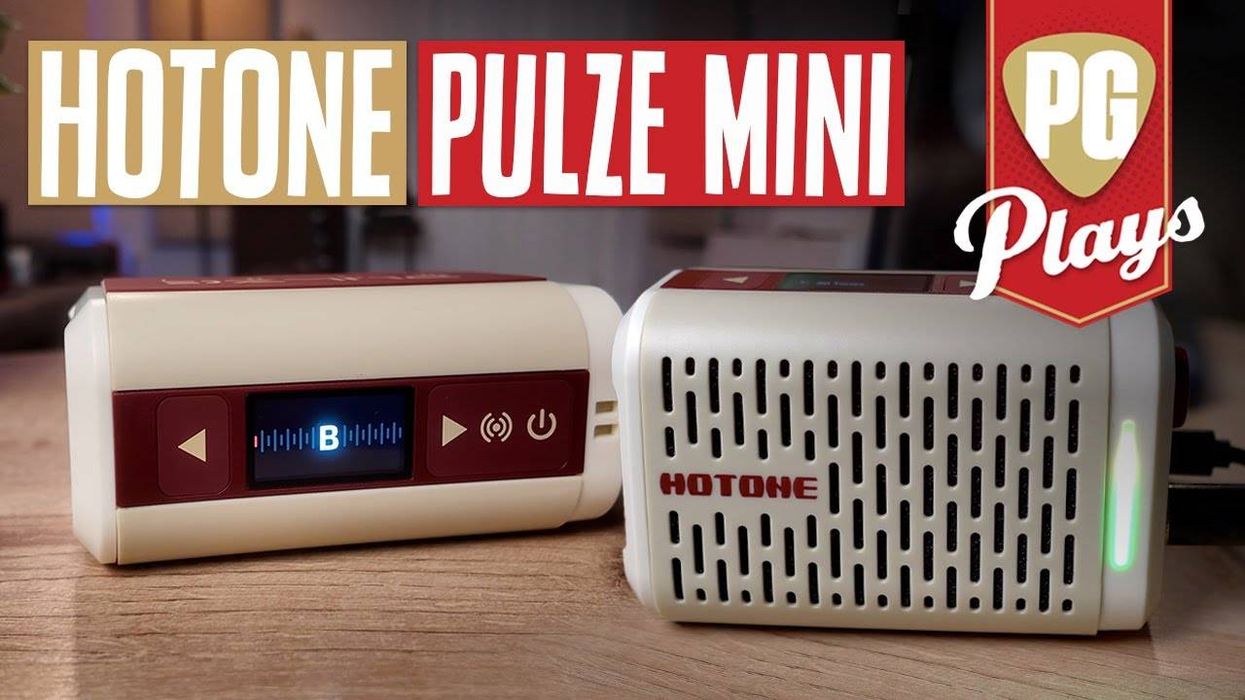What do Slade, Robert Fripp (King Crimson),
Tommy Bolin, Tommy Shaw (Styx, Damn
Yankees) Martin Barre (Jethro Tull), and Mike
Rutherford (Genesis) all have in common?
They used vintage Hiwatt amplifiers to achieve
their signature tones. Put on the Who’s
classic album Live at Leeds, and you’ll hear
these amplifiers in all their naked glory. In my
humble opinion, Hiwatts are probably the most
unforgiving guitar amplifiers to play through,
and one of the more difficult to “make friends
with,” because they are so damn accurate and
quick in the way they reproduce sound. That
said, the Hiwatt sound is much more refined
and chock-full of high-resolution details when
compared to any other British amplifier.
Part of the reason for their special sound lies
in the fact that they are quite a bit cleaner
than, say, a Marshall metal-panel 100-watt
head, and they respond extremely quickly to
the player’s touch. In fact, after seeing and
hearing a few vintage Hiwatts over the years,
I can safely say that a Hiwatt is more closely
related to a Vox AC30 than any other British
amp—a really big sounding AC30 at that. If
you like AC30s, you should get along with a
Hiwatt without any major issues (other than
adjusting to its super-fast response).
Hiwatt’s 4x12 cabinets also play an important
part in the their overall tone—something I first
discovered with a Marshall Major, ironically
enough. In the mid ’70s, I had the opportunity
to take some private lessons with Bill Connors
(Return to Forever’s first, and best, electric
guitarist) when he lived in the San Francisco
Bay Area. These lessons went for about a year
before Bill decided to move back to New
York, and he asked me whether I could help
sell his RTF performing rig, which consisted
of a Marshall Major 200-watt head coupled
with two model 4122 Hiwatt 4x12 cabinets.
Even though Connors had already sold the
Maestro Full Range Booster that he used to
overdrive this monster rig—the “secret sauce”
to his single-note tone—that amp and speaker
combination was devastating nonetheless. It
was bold, loud, and chimey all on its own, with
only a Les Paul plugged into the Major head.
A critical element in the sound of those
Hiwatt cabinets were the original 50-watt
Fane speakers. These have an inherently
chimey quality that might remind many
players of the old original Vox “Blue”
speakers. One of the greatest benefits of
the original Fanes is that they clean up very
quickly when you lower your guitar’s volume
control, thus allowing you to obtain both
acoustic guitar-like clarity at lower levels and
that famous kerrang when the volume is set
at full bore. And believe me, once you can
tame the roaring thunder of a goosed Hiwatt
rig, you’ll be able to play anything else.
True proof of the Fanes’ brilliance came nine
years ago at the so-called Tampa Tone Fest,
an informal gathering of amp enthusiasts
and friends. One day, while we were at
lunch, resting our ears, our friend and Hiwatt
collector, Patrick, hooked up my Komet 60
head into a 1975-era model 4123 Hiwatt
cabinet to compare it to the various Marshall
cabs in attendance. We were all stunned at
the sound we heard coming out of those
Fane 50s—it was propelled with a laser-like
focus, unmatched by even our reference
1968 Marshall cabinet.
To this very day, I still crack up at the thought
of being able to hear Patrick from my car the
next morning, blasting the “big gun” 200-watt
DR201 model through two Hiwatt 4x12 cabinets
with my old Precision Bass—about 7 blocks
away from the venue. That was indeed a scene,
watching everyone run from the building when I
drove into the parking lot. Talk about loud!
In the decades since my first encounters with
Hiwatts, I’ve developed a real love of the
“snarling” tone Hiwatt stacks produce. This is
opposed to the “growl” that Marshall amps
produce—it’s a very different sound really.
The Marshall clean tone comes across as very
weak and distorted when compared side-by-side
with the Hiwatt’s obvious clean prowess.
There are a couple of things you need to
know about the Hiwatt design that make
things seem a little backwards if you’re used
to other British amp heads. Firstly, the high-low
sensitivity inputs are actually upside
down (the high-sensitivity input is on the
bottom, not the top like on a Marshall head,
for instance). Secondly, do yourself a big
favor and avoid plugging your guitar or bass
straight into the Brilliant channel inputs—
these things are razor-sharp, and have been
known to scare off new players before they
were able to discover the true Hiwatt tone.
Don’t say I didn’t warn you.
Finally, vintage Hiwatts are generally much
more reliable than other British amplifiers
because they were built by military-trained
assemblers. For example, the 200-watt model
Hiwatt heads are extremely well-made and
very reliable, whereas the Marshall Major
200-watt head was fraught with issues such
as catching on fire, not taking well to pedals,
etc. Hiwatt did produce a 400-watt head
that ended up having various reliability
issues, but they didn’t make too many before
pulling them from the market. One of the
late Ken Fischer’s last comments about these
amplifiers—besides noting that you should
“wear a diaper” if you were going to be
prodding around the insides of a 400-watt
amp—came in late 2006, when he told me
over the phone that, “The only vintage amp
that will be left standing (and still working) in
the year 2025 would be a Hiwatt!” Knowing
Ken, he’s probably right.
Dean Farley
Dean is the chief designer of "Snake Oil Brand Strings" (sobstrings.net) and has had a profound influence on the trends in the strings of today.















